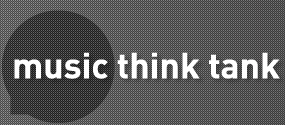 February 12, 2016
February 12, 2016 How To Choose The Best Digital Distributor For You
Part and parcel of getting your music out there into the world is ensuring that you can be found in all the right stores.
I say “right” because, not everybody will want full coverage in every store, and appropriateness of certain services or platforms will be down to your judgement but generally most artists will likely want to get their music onto many of the key online stores and streaming platforms like iTunes, Spotify, Amazon, Shazam and so on.
There are a few ways of doing this.
(before I jump in, I just want to say that this information, and a stack more about digital distribution, along with a sortable database of loads of distribution companies can be found in my course Successful Self Releasing)
Go Direct
Firstly, you could try to create a label or artist account with each of the platforms and distribute things completely by yourself - however you’ll struggle with platforms like iTunes or Spotify, and other larger stores, since they won’t want to deal directly with you of your label. 99% of the time they will work with distributors and aggregators instead.
That more or less counts this method out, unless you’re looking to get into a handful of small, quite specific stores only (or only wish to deal with somewhere like Bandcamp exclusively).
Distributor
Alternatively you could set up your own small label (a wise move, since many stores will want a label to exist for any releases).
Even if you’re a solo artist, releasing just your own work, a token label name and setup would be worthwhile. Once set up - you could approach a digital distribution company and sign a contract with them for a year or so, working with them to figure out the best distribution options for each release, and entrusting them to handle the setup and aggregation.
This option is common with indie labels, and is what I personally use with my record label. I like that I’m dealing with a human, and get sound advice on industry practice, as well as rapid support if required.
Distribution Platform
The third option, which is probably going to be most popular is to sign up with an aggregator or digital distribution platform.
This will allow you to upload your own music, setup the relevant information and artwork and then have your music beamed out to all the stores of your choice (although this may be restricted by the platform and their current aggrements).
This third option is what companies like Tunecore, CDBaby, Distrokid, Ditto, MondoTunes, Symphonic and countless other companies offer - all with varying levels of price, service, features and so on.
Choose Very Carefully
The most important thing you can do before you jump in, is weigh up your options and choose your distribution platform very carefully.
I can’t stress this enough, since changing platform, or moving your releases elsewhere, is not as easy as you might imagine.
Making the wrong choice this early in the game could lead to a fair bit of regret down the line, when you realise the mistakes you’ve made.
So I’d like to cover a number of things you should think seriously about before choosing your distributor or aggregator of choice.
Profit Percentage Cut
This is essentially the amount of money you get back from the distributor after they have taken their commission fee from your sales profit.
Some distributors will give you 100% of the sales profit, some will only pass back 90%, some even less. Usually a 100% profit cut from the distributor means you’ll be charged in some other way, either from upload fees, or recurring fees.
Basic Fees
Distributors can charge you fees in a number of ways. Some clear, some a little more hazy.
There could be a sign-up fee. This is a flat fee for joining with them.
You may also be charged a “label registration” fee, in order to set up your label with stores that require it. This often takes the form of a custom label name more than anything else.
On top of that (or alternatively) you could be charged monthly or yearly fees to use the service.
And if none of the above apply, you will likely be charged to upload your release. Commonly there is a set of 2 or 3 options for uploading releases. A single, an EP or an album. Each will have an associated fee, and amount of tracks, or length of tracks will determine which type of release you’re dealing with.
Some distributors opt for a per-track fee instead.
Many distribution platforms will have one or a combination of these basic fees - so make sure you know which you’re getting yourself in for. (recurring fees are often glossed over too - be careful to check for small-print)
Other Fees
Many distribution platforms make their money via extra costs incurred, when you want to do something beyond the basic distribution setup. This can involve numerous things.
Anything from extra stores (beyond a core offering) to iTunes pre-orders, registration with Soundscan, Youtube monetisation, SHazam registration, digital booklets, extra detailed reports, or UPC codes (really only needed for physical products or registration with Soundscan).
Again, it’s about making sure you know exactly what fees are involved, and what you’re getting. If you’re not sure, there’s no harm in checking the FAQs or emailing sales to make sure.
What Stores Do You Want?
Many digital distributors offer the same core selection of stores, but be aware if you’re looking for one store or platform in particular (Beatport, Junodownload or perhaps a location or genre-specific store) you may need to make sure your distributor covers it.
Most distributors offer a list of stores, but be aware that due to the changing landscape of the digital music industry these lists will go out of date and can change regularly.
Again the best way to be 100% sure, is to get in touch with them and ask. It’s most likely that they will be able to send you their most up to date stores list too.
Payment
How you get paid by the distributor may affect your choice of which to go with. Generally most seem to pay into Paypal or a bank account, but the regularity of these payments and the threshold at which these payments happens varies.
Some will pay you right away, some will pay you weekly or monthly, and some may only pay you when you request it.
Thresholds can vary from zero, right up to needing a $50 profit or more before you can get paid.
Level of Support
This may not be so much of an issue if you’re aware of what you’re getting yourself in for, but even for the experts, it’s handy to have responsive support staff.
I had to upload a giant release with 40 odd tracks a few years ago, and it was great to know I could send the support staff the tracks and have them handle the uploads while I was on an unreliable connection.
Generally these platforms offer phone support and email support, often with response rates of around a day or two. How helpful and knowledgeable they are will of course vary, but a quick message to them up front may give you a fair idea of how good they are, and asking around may yield reports on level of service once you’re signed up.
Bottom Line
The bottom line here is that it’s real easy to sign up for one of these services believeing it’s your only choice, or on a recommendation from someone with very different priorities to you.
What you need to realise is that there are more than just the 2 or 3 companies that get mentioned regularly, and many provide a much better, cheaper or faster service than the key players do.
Changing Company
Getting locked into a distribution setup with a company you’re not happy with is never going to be ideal, but what’s worse is that changing company is never going to be plain sailing.
You can’t feasibly do your distribution with more than one distribution company, unless you are making sure not to distribute to the same stores with the same label names, since then you’re going to run into bother.
Also, if you’re using the same releases on different distribution platforms, the ISRC codes (unique code for each piece of music) are going to clash, and you’ll run into difficulty.
Ultimately you want to keep all your label’s or artist’s distribution within one platform or company, to avoid complications.
If you have made the wrong decisison, and want to switch provider, then you’re going to have to go through the process of issuing takedown requests to every single store.
Once takedowns have been requested, you have to wait for that to happen, then re-upload your catalogue from a new platform, and hope that there’s no clashing happens, or legacy stores which didn’t issue the takedown in time.
Then you’ve got the added headache of having your releases bumped to the “new releases” sections when they’re not necessarily so - this might not be a problem for many, but I had people on my label complain when I had to do it, since they were trying to promote other releases at the time and didn’t want to confuse matters, or bring up older releases they’re not so happy with.
Basically it’s a potential minefield of issues, many of which will not come with a simple solution.
So, by all means get on board with a distribution platform or aggregator, and get your music out there - but please make sure you do your research before leaping into an agreement or account setup that you can’t easily back out of.
This advice and more can be found in the course: Successful Self Releasing - The Ultimate Guide To Getting Music Out There.
Alongside a host of info about distributors, I have also pulled together a giant list of distribution platforms, companies and aggregators, along with their costs, links to their store lists and sortable lists of other information.






Reader Comments